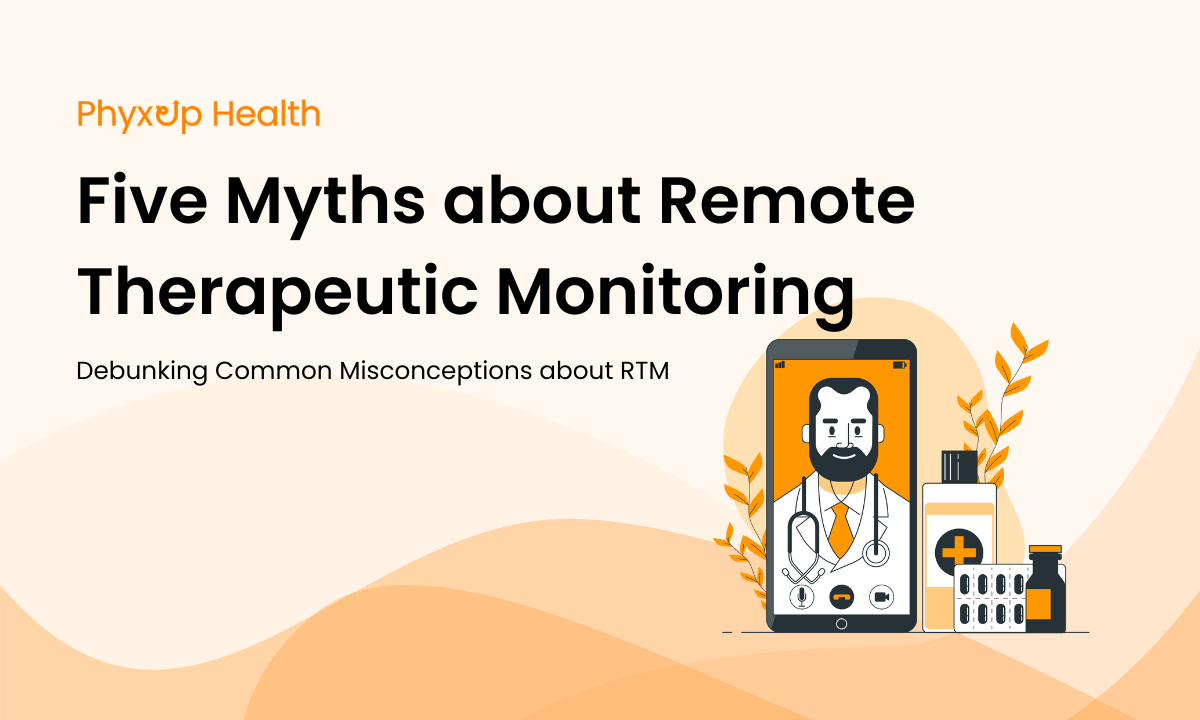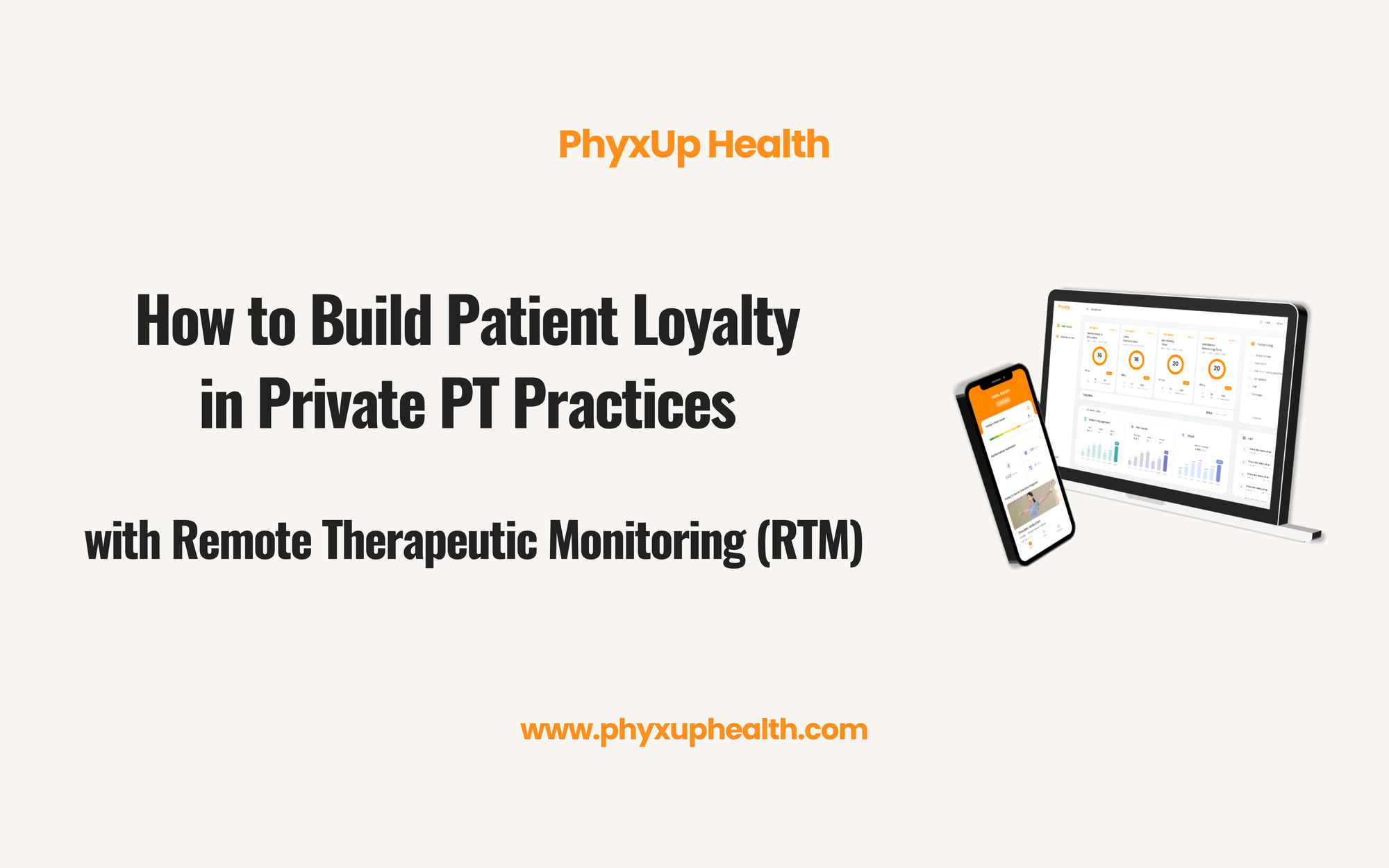Five Myths About Remote Therapeutic Monitoring (RTM)

Since Remote Therapeutic Monitoring (RTM) was introduced in 2022 as a billable service for MSK care under CPT codes 98975, 98977, 98980, and 98981, clinics across the United States have increasingly adopted RTM platforms. While many have seen strong clinical and financial results, a number of clinics and physical therapists still have doubts about how RTM works and whether it’s worth the effort. This article aims to clear up the most common misconceptions and help interested clinics understand the true value of RTM.
Myth #1. RTM will replace in-person visits
At first glance, it’s understandable why some physical therapists might view Remote Therapeutic Monitoring (RTM) as a threat to their in-person practice. It may seem like patients could skip clinic visits altogether, relying instead on home exercise program (HEP) videos and remote updates through the platform. Fewer appointments could mean fewer billable visits, which would understandably raise concerns about long-term business sustainability.
However, contrary to popular belief, RTM does not replace in-person clinic visits, but rather encourages it.
Clinics using RTM have seen an average of 15 percent improvement in patient outcomes. These improved results help build stronger trust between patients and their care providers, which leads to higher retention and a greater willingness to continue in-person treatment. RTM also helps reduce no-shows and last-minute cancellations by keeping patients engaged and accountable throughout their care journey. Instead of pulling patients away from the clinic, RTM helps bring them back with more consistency and motivation.
Myth #2. RTM isn't cost-efficient. It simply costs too much and delivers so little.
For many clinics, especially smaller ones, the idea of adopting a new platform can feel overwhelming. Subscription fees, onboarding costs, and the effort required to fit a new system into an already packed workflow might seem like more trouble than it's worth. It’s easy to assume that RTM will just add to overhead without delivering measurable value.
But that assumption misses the bigger picture. When paired with the right platform and integrated into the clinic’s daily operations, RTM becomes more than just another tool. It increases revenue and improves patient outcomes, all while reducing administrative burden. Automated billing, patient data collection, and progress tracking can significantly cut down on time spent managing care behind the scenes. With features like customizable home exercise videos, real-time progress dashboards, and AI-powered treatment suggestions, RTM actually helps clinics deliver better care with less manual work. And with PhyxUp Health’s flexible pricing structure, it’s easy to see a strong return on investment without stretching your budget.
Myth #3. RTM adds onto existing administrative work and takes too much time to bill
Across clinics in the United States, administrative tasks such as documentation, billing, and scheduling consume a large portion of clinicians’ time. When combined with managing expenses like staff salaries, medical equipment, and software subscriptions, it’s easy for clinics to feel overwhelmed. Unfortunately, this often means less time is available for face-to-face patient care, which is critical for delivering quality treatment.
RTM platforms like PhyxUp Health were specifically designed to address these challenges. Understanding the daily administrative burden faced by clinics, PhyxUp helps automate many time-consuming tasks. One common concern about RTM is the complexity of billing, including learning how to bill, submitting claims, and handling denials or audits. PhyxUp Health eliminates this problem by automating the entire billing process, effectively allowing clinics to outsource their billing work to the platform.
With features such as pre-coded CPT templates, automatic monitoring of patient tracking time, and seamless syncing between monitoring and billing, PhyxUp Health delivers RTM benefits without adding billing headaches. This means clinics can reduce administrative burden, improve patient outcomes, and increase billable units all at once.
Myth #4. RTM is just Telehealth. What's the difference?
For practices that haven't previously used RTM platforms, the difference between more popular Telehealth services and RTM might not be so clear. After all, many popular Telehealth platforms revolve around providing remote care services such as virtual clinic visits, progress updates, and treatment plans. RTM features are very similar, also providing services for clinics that enable them to track their patients' progress remotely.
Then, what is the difference between RTM and Telehealth?
Actually, there are quite a few differences between the two platforms in the functions that they serve:
| Category | Telehealth | Remote Therapeutic Monitoring |
|---|---|---|
| Interaction Type | Live, synchronous video/audio sessions between PT and patient | Asynchronous tracking of patient-reported data via digital tools |
| Reimbursement | Reimbursed for virtual visits during scheduled sessions | Reimbursed for remote monitoring of therapeutic adherence, progress, and engagement |
| Patient Engagement | Limited to appointment time | Ongoing, daily engagement through app-based monitoring |
| Use Case | For real-time evaluation, consultation, or exercise correction | For monitoring home exercise compliance, pain levels, function, etc. |
While both Telehealth and Remote Therapeutic Monitoring (RTM) bring physical therapy beyond the clinic, they serve very different purposes. Telehealth allows real-time video sessions between patients and therapists, ideal for consultations or guided exercises. RTM, on the other hand, enables therapists to remotely track patients' progress, pain levels, and adherence to home exercise programs through digital tools with no live session needed. Think of Telehealth as the “visit” and RTM as the “ongoing care” in between.
Myth #5. Patients don't want to be charged for additional services, it's too hard to sell
Many clinics hesitate to adopt Remote Therapeutic Monitoring (RTM) because they assume patients will push back against added costs. But here’s the truth: RTM is a reimbursable service that provides real value to patients—ongoing support, personalized care, and improved outcomes between visits. When positioned correctly, most patients see RTM not as an “extra charge,” but as an extension of their care that helps them stay on track with recovery.
The key is transparency and communication. RTM is covered by Medicare and most commercial insurance providers, including:
- UnitedHealthcare
- Aetna
- Cigna
- Humana
- Blue Cross Blue Shield (varies by state)
Educating patients that these services are billable through their existing insurance and showing them it is not an out-of-pocket upsell builds trust and buy-in. Clinics using RTM report high patient satisfaction and low drop-off rates. It’s not about upselling: it’s about elevating care.

RTM Isn’t a Burden. It’s a Breakthrough.
RTM doesn’t replace in-person visits, compete with Telehealth, or drain your time and resources. When done right, it complements your care model, improves patient outcomes, and drives new revenue. The myths around RTM come from outdated assumptions or early tools that were hard to use, not from how it actually works today.
That’s where PhyxUp Health makes the difference. Our all-in-one RTM platform is built for physical therapy clinics, with patient onboarding, progress tracking, automated messaging, and billing support all in one place. We make RTM seamless and scalable so your team can focus on care, not paperwork.
Ready to see how easy RTM can be?

